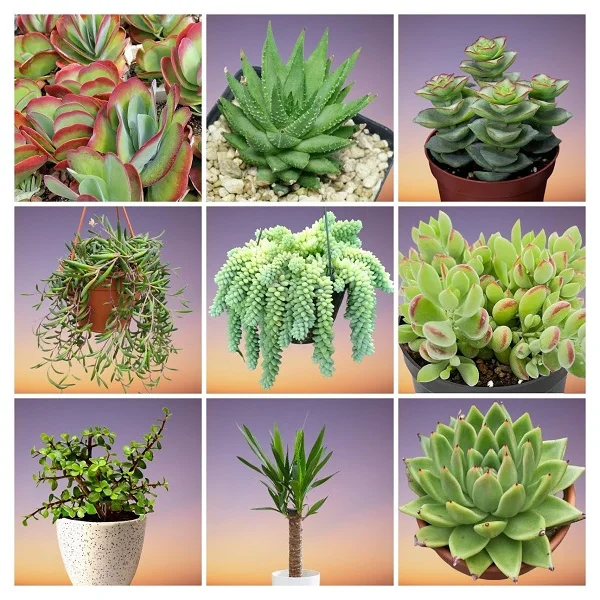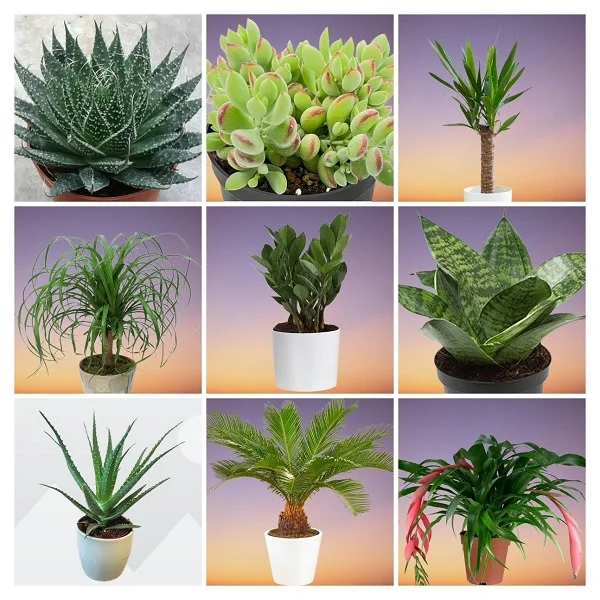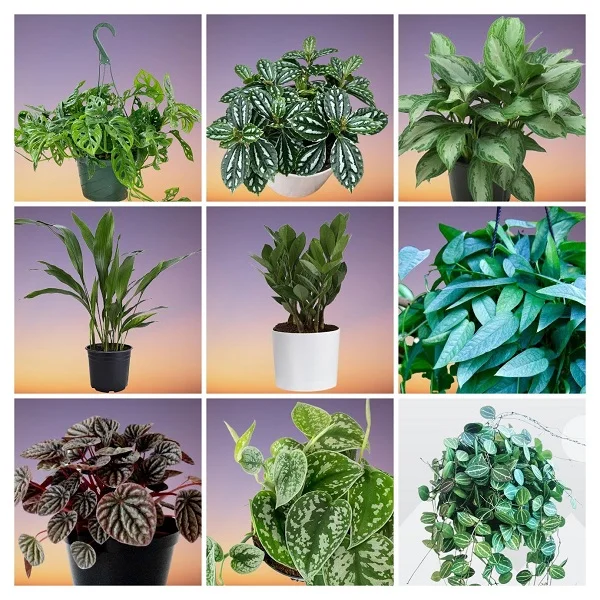Tradescantia navicularis (Chain Plant) Indoor Care, Propagation, Problems and Solutions
Some links in this post may be affiliate links
Tradescantia navicularis (Chain Plant) thrives in bright indirect light, average warmth, moderate humidity and moderately moist, rich, well-drained soil coupled with fortnightly feeding in the growing season.
Chain Plant Succulent also called Widow's Tears Plant or Day Flower is one of the popular Tradescantia varieties and bears two types of stems which exhibit different growth habits.
Some stems are short, grow upright and bear tight overlapping leaves while others spread along the ground and bear more open leaves.
Tradescantia navicularis also referred to as Callisia navicularis bears fleshy stems which are tightly clasped by thick waxy lance-shaped leaves. The leaves are bronze-green with purple streaked undersides. It is among the popular succulents plants ideal for any space.
Bright pink flowers arise from the spreading stems. The flowers open in the morning and close in late afternoon, lasting only one day and hence the common, 'Day Flower'.
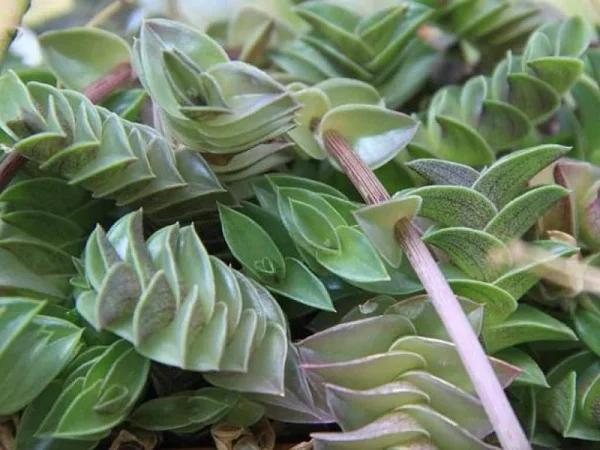
Botanical name: Tradescantia navicularis
synonm: Callisia navicularis
Family: Commelinaceae
Common names: Chain Plant, Widow's Tears Plant, Day Flower
Is Tradescantia navicularis toxic?
Yes. Tradescantia navicularis is mildly toxic to humans and pets. If ingested, the plant sap can cause burning in the mouth, tongue and throat. The sap may also cause skin irritation in sensitive skin; always wear gloves when handling the plant. Keep it away from children, cats, dogs and other pets.
Where to Buy
If you looking to add Tradescantia navicularis to your collection, they are available online on Etsy (Link to Etsy).
How to care for Tradescantia navicularis indoors
Care for Tradescantia navicularis indoors, entails giving it bright indirect light, average warmth of 16-270C, humidity of 50-55% and moderately moist, fertile, well-drained soil coupled with fortnightly feeding during the growing season.
Chain Plant navicularis care requires repotting only when extremely pot-bound as it grows best when slightly root-bound. Regular pruning is needed to keep it neat, to reduce pest and disease infestations, to encourage a bushy growth and to rejuvenate growth. Keep reading for more on the best growing conditions and how to achieve them.

Watering
How do you water Tradescantia navicularis?
Water your Tradescantia navicularis thoroughly in spring and summer and allow the top 2-3 inches of soil to dry out between waterings. Maintain the soil moderately moist and avoid overwatering to prevent yellowing and rotting.
Lessen watering in fall and winter to keep the soil slightly moist as growth is minimal. However, do not allow the soil to dry out completely to avoid wilted and wrinkled leaves.
Use a pot with a drainage hole and well-draining soil to prevent waterlogging as it can lead to root-rot and death of the plant.
Light Requirements
Tradescantia navicularis grows best in bright indirect light (filtered light). Keep it away from direct sunshine as it can scorch the leaves causing browning.
Instal full spectrum grow lights where the natural lighting is not adequate to promote healthy growth and prevent leggy growth.
Regularly rotate the pot to ensure that the plant receives light on all sides for even growth and prevent lopsided growth.
Temperature and Humidity
Tradescantia navicularis performs best in an average warmth of 16-270C. A room temperature that is comfortable for you is ideal for this plant. Keep it away from drafts as they can cause reduced growth and yellowing.
Chain Plant prefers a dry environment. It has no need for extra humidity; a moderate air humidity of 50-55% is ideal for this plant. Ensure that there is proper circulation to minimize fungal diseases.
Fertilizer
Feed Tradescantia navicularis with a balanced, liquid fertilizer every 2 weeks in spring through summer for a lush growth.
Do not feed in fall and winter as the growth is slowed and feeding at this time may lead to fertilizer burn.
Potting Mix
The best potting mix for Chain Plant should be rich in organic matter and free-draining to prevent it from getting soggy while providing the required nutrients. Most cactus and succulents potting mixes are ideal for this plant.
Repotting
Repot Tradescantia navicularis at the beginning of the growing season (spring to early summer), only when the plant has become extremely pot-bound as it grows best when slightly root-bound.
Select a pot one size larger than the current one and ensure that it has a drainage hole and the soil is well-draing to prevent root-rot. Take a look at these succulents pots available on Amazon.
Pruning & Grooming
Pruning Chain Plant involves regular removal of dead foliage to maintain the plant neat and tidy as well as minimize pest and disease infestations.
To control the growth and encourage bushyness and compact growth, pinch the growing tips regularly.
Cutback leggy stems at the beginning of the growing season (spring to early summer) to rejuvenate growth.
Clean the leaves by damp-wiping with a soft cloth to keep them clean as well as discourage pest and disease infestations.
Tradescantia navicularis Propagation
Tradescantia navicularis (Chain Plant) is propagated by plant divison or from stem cuttings during the growing period when it is in active growth.
How to propagate Tradescantia navicularis by plant division
- Water the plant thoroughly at least 1 day before to make it easier to divide and also hasten establishment.
- Slip the plant out of its pot and carefully divide it into sections. Ensure each sections has adequate roots and at least one set of leaves.
- Select a 6 or 8 inches pot with a drainage hole to prevent the soil from getting soggy to prevent rotting.
- Fill the pot with cactus and succulents soil and make a hole in the center of the pot. Ensure that the hole is slightly wider than the root base of the section.
- Place the section in the previously made hole and lightly firm the soil around the base while taking care not to bury it too deep; maintain the section at the same soil level it was in the previous pot.
- Wet the soil thoroughly and place the set up in a well-lit, warm place until the new plant is well established after which you can begin routine care.
How to propagate Tradescantia navicularis from stem cuttings
The stem cuttings root easily so there is no need for rooting hormone.
- Take 4-6 inches of a stem cutting from a healthy plant and ensure it bears at least two sets of leaves.
- Allow some time for the formation of a protective callus tissue over the cuts of the cuttings to prevent rotting.
- Fill a rooting container with cactus and succulents soil to a depth of about 4 inches. Lightly moisten the soil.
- With a pencil or similar object make a hole that is wider than the diameter of the cutting.
- Carefully insert the cutting in the hole made previously to a depth of about 3 inches.
- Place the set up in a warm, well-lit place and maintain the soil moist through out until new growth emerges.
- Allow the new plant to be well established before transplanting to individual pots after which you can begin routine care.
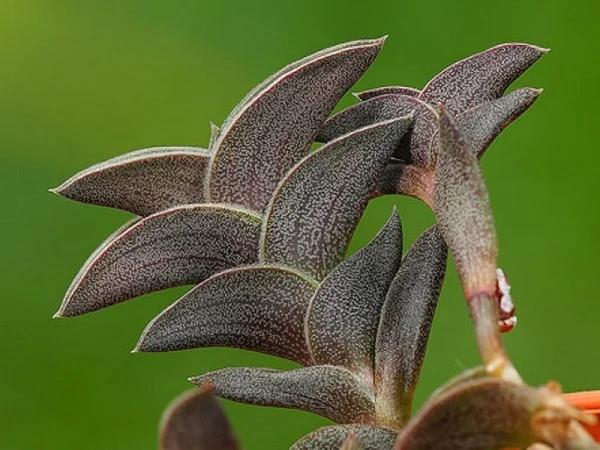
Tradescantia navicularis Problems & Remedies
Tradescantia navicularis (Chain Plant) problems include brown leaves, dying leaves, yellow leaves, leggy growth, loss of leaf color, pests and diseases among others. Keep reading for more on these problems, their remedies and solutions.
Brown leaves
Why are my Tradescantia navicularis leaves turning brown?
The main causes of brown leaves on your Tradescantia navicularis are incorrect watering, too little light, temperature stress, and direct sunlight.
How to fix it
Incorrect watering: Water when the top 2-3 inches feel dry but do not allow the soilball to dry out completely.
Too little light: Position the plant in a brightly-lit spot or use a grow light if the natural lighting is not adequate.
Temperature stress: Keep the plant from drafts coming from hot surfaces, hot air vents, AC units, windy doors, drafty windows and others.
Direct sunlight: Move the plant to a more shaded spot or use a sheer curtain to filter the sunshine.
Dying leaves
Why are the leaves on my Tradescantia navicularis dying?
The leaves on your Tradescantia navicularis are dying due to root-rot which is common in soggy soil. The disease is characterized by yellowing and wilting of the leaves which is rapidly followed by browning and plant collapse.
How to fix it
- Carefully slip the plant out of its pot and inspect the roots.
- Trim brown-black, mushy roots and treat the healthy roots with a copper-based fungicidal solution as recommended by the manufacturer.
- Disinfect the pot with the fungicidal solution or use a fresh pot to repot the plant in fresh, well-draining soil.
- Do not water the plant immediately and keep it dry for 5-7 days before you can resume watering.
- Use a pot with a drainage hole and well-draining succulents soil to prevent the soil from soggy.
- Significantly, cut down on watering in fall and winter as growth is minimal at this time; keep the soil barely moist.
Yellowing leaves
Some of the causes of yellow leaves on Tradescantia navicularis are inconsistent watering, soggy soil, drafts, too little light, and aging.
How to fix it
Inconsistent watering: Water when the top 2-3 inches of soil feel dry. Do not water on a schedule.
Soggy soil: Use a pot that has a drainage hole and soil that is well-draining.
Drafts: Keep the plant away from drafts emanating from windy doors and windows, AC units, stoves, hot air vents among others.
Too little light: Move the plant to a brighter spot or use a grow light if the natural light is not enough.
Aging: This is a natural process; as the plant matures it sheds the older leaves which first turn yellow, then brown and eventually drop.
Leggy growth
Leggy growth on Tradescantia navicularis is caused by too little light, underwatering, and nutrients deficiency.
How to fix it
Too little light: Move the plant to a brighter spot where it will receive bright indirect light or instal a grow light if the natural lighting is not adequate.
Underwatering: Water the plant when the top 2-3 inches of soil dry out but do not allow the soil to dry out completely.
Nutrients deficiency: Feed it every 2 weeks in spring through summer with a balanced, liquid fertilizer but do not feed in fall and winter.
Loss of leaf color
Loss of leaf color on Chain Plant is caused by inadequate light. Move the plant to a brighter spot or instal a grow light if there isn't enough natural light in your home.
Pests
Common pests on Tradescantia navicularis are aphids, mealybugs and scales.
How to fix it
- Check underneath the leaves regularly for these pests and take timely control measures.
- Isolate the affected plant to prevent spread to other plants.
- Treat the infested plant with neem oil or insecticidal soap as per the manufacturers' instructions.
- Regularly damp-wipe the leaves with a soft cloth to discourage the pests.
- Maintain the plant well pruned to minimize the hiding and breeding grounds for these pests.
Diseases
Chain Plant is prone to leaf spot disease which is prevalent in humid and poorly ventillated conditions. It is characterized by brown, moist spots on the foliage. In a serious attack the spots can enlarge and merge, killing the whole leaf.
How to fix it
- Remove and burn the affected parts to reduce spread to the rest of the plants.
- Spray the affected plant with a systemic fungicide and ensure to follow the manufacturer's recommendations.
- Keep the plant on the dry side for 1-2 weeks.
- Improve air flow for the plant to minimize the occurence of the disease.
You liked it? Share on social media.
Related Content
Amazon Associates Disclosure
Homeplantsguide.com is a participant in the Amazon Services LLC Associates Program, an affiliate advertising program designed to provide a means for sites to earn advertising fees by advertising and linking to amazon.com.



